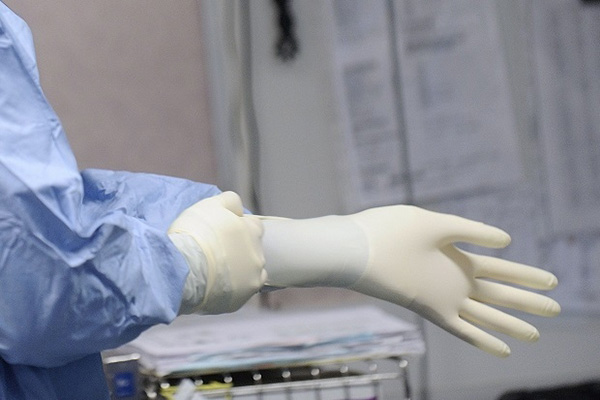
The pricing competition between the glove manufacturers especially in the nitrile segment is epxected to persist for at least the next two years until 2018 as new capacity for nitrile glove production comes on board from all the four major rubber glove manufacturers.
KUCHING: Researchers with MIDF Amanah Investment Bank Bhd (MIDF Research) believed the new policy from Bank Negara Malaysia (BNM) may result in a double conversion effort for rubber glove exporters.
This is in relation to the policy effective December 5 this year whereby exporters holding proceeds in foreign currency would need to convert as much as 75 per cent of it into ringgit.
“As the bulk of revenue for rubber glove manufacturers are denominated in foreign currency, US dollar is normally used as a natural hedge for the purchase of raw material prices such as nitrile, latex and chemicals,” it detailled in a report yesterday.
“This new policy will result in glove manufacturers having to execute double conversion as US dollar revenue is converted into ringgit and back into US dollar for expenditure purposes.”
Meanwhile, the various external cost increases which adversely impacted most of the rubber glove manufacturers’ earnings for the third quarter of 2016 (3Q16) is believed to be a temporary blip by the research firm.
These various external cost increases included the hike in minimum wage as well as the increase in natural gas price which took effect in 3QCY16 caused the earnings of glove manufacturers to be negatively impacted.
“This is because it takes about two to three months for these costs increases to be incorporated into the average selling prices (ASPs) to be borne by the customers.
“Generally, prices are locked in upon confirmation of order which would then take roughly two months to be completed.
“Therefore, the increases in costs which took place in between these times would not be transferred to the customers,” MIDF Research said.
That said, the research arm thought that this was a temporary blip as it believed conditions will improve once the costs are factored into the ASP starting from 4QCY16 onwards.
The pricing competition between the glove manufacturers especially in the nitrile segment is epxected to persist for at least the next two years until 2018 as new capacity for nitrile glove production comes on board from all the four major rubber glove manufacturers.
The research arm noted that it is now a buyers’ market due to the expanded glove production capacity now available to these manufacturers.
“The glove manufacturers will need to be more competitive in terms of pricing as scalability is no longer an issue, unlike two to three years ago.
“This is made worse by the various production cost increases mentioned earlier,” it said.
To overcome this, MIDF Research thought that the manufacturers will try to ensure that the input costs per glove stays low via increasing automation in production process, pushing for higher utilisation rate, concentrating on customers that are less price sensitive, as well as having an efficient cost pass-through mechanism.
Additionally, the research arm thought that the margin compression resulted from the pricing competition will slowly normalise as all the new capacity comes in and the manufacturers would have adapted to the increased production costs.
Meanwhile, MIDF Research noted that the raw material prices have been slowly creeping up since late September 2016.
The research arm understood from its channel checks that the increase in natural rubber price is mainly due to the increase in demand for motor vehicles in China.
“This is pursuant to the purchase tax cut on motor vehicles with engine capacities of 1.6 litres and below by the government of China from 10 per cent to five per cent which drove the demand for natural rubber with respect to the production of tyres.
“According to China Passenger Car Association (PCA), sales of motor vehicles with engine capacities of 1.6 litres and below have increased by more than 20 per cent month-over-month ever since the tax cut was introduced.
“The tax incentive is expected to expire by year-end and the Chinese auto makers are expecting an eleventh-hour surge in sales as customers rush to beat the tax-cut expiration,” it said.
